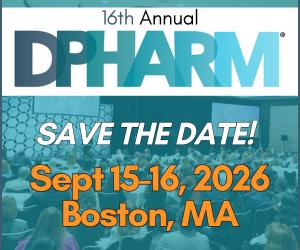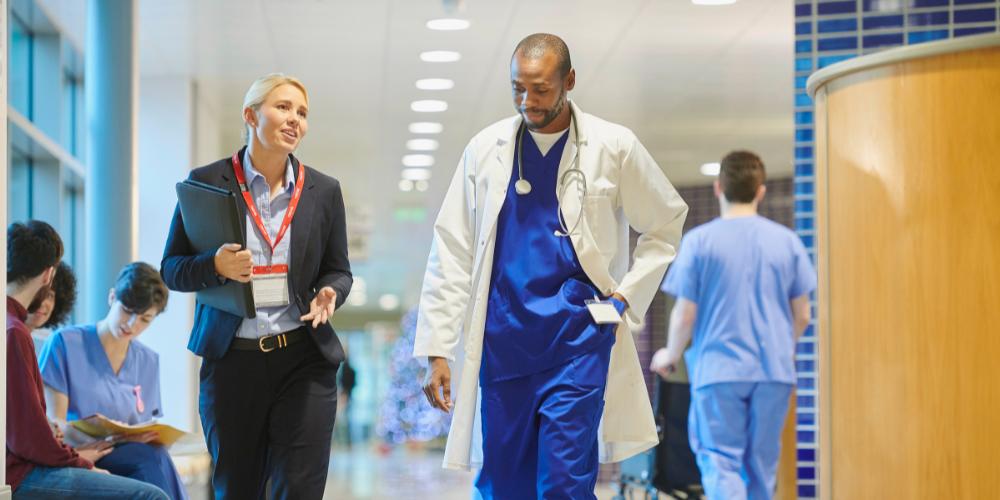BMS and the LGBTQ+ Community Improve Clinical Data to Achieve Health Equity
Bristol Myers Squibb (BMS) has operationalized the voluntary and private collection of Sexual Orientation and Gender Identity (SOGI) data for adult patients in their US clinical trials. BMS’ Lorena Kuri, Donna Sattler and Jessica Brescher walk us through achieving this, why it matters so much, and call upon other companies to do the same.

Why is it important to medicine development that we collect SOGI data?
Lorena Kuri: BMS made commitments to health equity, clinical trial diversity and addressing the needs of underrepresented populations back in 2020. To do that, we need information, specifically data. There was no information on what happens with sexual and gender minorities whatsoever, because the pharmaceutical industry doesn’t collect that data. And as an industry, we also have an obligation to assure that they are feeling safe so we can provide the best care and do better science.
Once we have a relevant amount of data, we can analyze it to get answers on, for example, diseases that are identified or diagnosed at a later stage in LGBTQI populations. We don’t know yet if certain diseases are more prevalent in these communities, but if they are, then our outreach efforts should be addressing those groups in a way that we’re not doing currently.
Donna Sattler: Clinical studies should accurately reflect the real-world population when collecting data. Sexual and gender minorities are not proportionately represented in clinical trials compared to the general population. I view this data collection as equivalent to any other demographic or subject characteristic. Over time, it will hopefully become more normalized and inclusive.
Jessica Brescher: One of the key concepts of research is generalizability – if you can apply the findings of your study to the larger population. We know that some of these diseases disproportionately affect the LGBTQIA+ community, but don’t know if they are adequately represented in our trials. This is a huge gap in our knowledge of the efficaciousness of our treatments in the real-world disease population.
"Clinical studies should accurately reflect the real-world population when collecting data. Sexual and gender minorities are not proportionately represented in clinical trials compared to the general population."
How and where is BMS operationalizing SOGI data collection?
LK: All eligible trials that are recruiting adult patients in the US and utilizing an electronic device to report patient-reported outcomes will offer the patient the option at the end of the first visit to privately disclose sexual orientation, gender identity, and intersex status.
Last year from all our eligible trials, 63% provided this data and we are seeing more traction. We know that there are other countries that are interested in implementing, such as Argentina, Brazil, Mexico, and Canada. We've also learned that there might be some hyperlocal considerations. For example, when writing the questions to be asked in Canada, they asked about including two-spirit terms.
What education did you provide for sites to prepare them on collecting SOGI information?
LK: We created standard content that we offer in our investigator meetings or site initiation visits on overall clinical trial diversity. We have language around SOGIs and why we are collecting that data. We felt it was our role as a pharmaceutical organization to provide the necessary education, content, and the connection to patient outcomes SOGI data collection has to offer.
We’ve been offering voluntary diversity, equity, inclusion and belonging training as part of our free curricula; there is education on sexual and gender minorities as one of the underrepresented groups we need to address. We have also trained all of our site-facing associates – our clinical trial monitors, our field medical folks – on SOGIs.
JB: We’ve also had training for our CROs who perform site-facing activities. It is important to educate all stakeholders on the importance of implementing SOGI and being able to answer questions and concerns the sites have because they are our connection to the patients.
"We felt it was our role as a pharmaceutical organization to provide the necessary education, content, and the connection to patient outcomes SOGI data collection has to offer."
How did you explain why you’re asking patients and sites to give this data?
LK: There is language now in our informed consent that explains to patients that we will be collecting some of their personal information just to better understand their characteristics and if there is an impact, not study-specific, but on their journey.
We are very clear that patients can choose whether or not they want to disclose, and in all of our questions we have the option of “Prefer not to answer.” A patient can decide not to disclose that information. A site can opt out of offering this to a patient as well. We are insistent that this will have no impact in their participation on the trial or in the site participation in the trial. They will continue to be recruiting patients if they don't allow patients to self-identify and the patient will continue in the trial if they don't self-identify.
What has been the site reception/adoption?
LK: The snapshot that we have as of today, almost a year from implementation, 50% of the sites have opted in. There are multiple variables that can impact this, but we need to acknowledge that sites are already busy and burdened and there's a lot of information and additional work that they need to go through. We’re also aware that geographically there might be some sites that may or may not be as comfortable. We see the same thing when we collect pregnancy status or considerations around contraceptives.
What other actions are you taking to accompany this initiative?
LK: We started utilizing gender-neutral language in our protocols a couple of years ago, and we’ve continuously evolved in how we speak. We did the same thing with all the materials that we have for recruitment and engagement. For example, it’s not “woman” or “man” but “participant” or “individual.” These sound like small details but could have a big impact on someone who might be recently accepting their identity.
The other action that is relevant to this conversation is that we have been working with the analytics team and with our organization on understanding if our eligibility criteria could be unintentionally screening out potential patients, such as hormone replacement therapies, pre-exposure prophylaxis (PrEP) medication, HIV status, active infections, etc. Some of that criteria may just be there because it has always been there, but is not scientifically needed.
How is scientific demographic data impacted by the work being done collecting SOGI data?
DS: Historically, the “Sex” data point is used for determining binary lab test normal ranges for male and female study participants. Considering only binary choices for Sex at Birth, instead of including Intersex conditions, is limiting the real-world data. Additionally; it can potentially be problematic for someone on gender-affirming care whether male, female or intersex. If someone selects Intersex now, there must be considerations for how their lab test results are analyzed. There are focused SOGI teams now determining the best way to collect data for anyone on gender affirming care.
Demographic data, which includes “Sex at Birth,” is not being asked at clinical sites since a participant's data is being pulled from electronic medical record systems to be used in the clinical trial database. Proving the mechanism for self-reporting Sex at Birth is the initial step for building trust with our study participants. If we do not even ask the question, why would they tell us?
What have you learned throughout this process?
LK: I learned that it’s easier for me to ask straightforward questions to, for example, the folks from our Pride Group, than assuming anything. I've always considered myself an ally and had this title of “Head, Diversity Strategy for R&D,” there are so many things I didn’t know. That’s a reflection of what could happen at a research site: HCPs could be just making assumptions, thinking that they’re being inclusive, and not being correct.
DS: I learned so much. Like Lorena, I’ve always considered myself an ally. But as the LGBTQIA+ space evolves, we researchers need to stay engaged and continue to educate ourselves as well as those who care for our study participants.
JB: I am currently a doctoral student and the focus of my research is the ethical inclusion of sexual and gender diverse patients in clinical research. Most of my work has been on the site level, but it’s been important to see how the pharmaceutical industry can also drive the process and what a key ally they can be. This work really requires all pieces of clinical research to work together.
"Let us offer patients the opportunity to feel fully seen and understood. Let this not be a one-hit wonder or a “BMS project."
What’s your message for other organizations?
LK: We need to start normalizing these conversations, and we need to start looking at underrepresented patients as a whole. In the same way as we focus on race and ethnicity, let’s continue that work and make sure that we do it under the right data collection standards. Let us offer patients the opportunity to feel fully seen and understood. Let this not be a one-hit wonder or a “BMS project.” We presented this data to see the audience reactions and to bring people on board in this journey.
DS: Get involved! All voices need to be considered. Use your ERG’s and bring lived experiences from cross-functional teams into your decision-making.
JB: Make sure you have the right people at the table. What really made this process so unique is that volunteers from our PRIDE ERG helped drive it. So many times decisions are made about communities without their input on how best they are represented, so go the extra step to make sure their voices are heard.
What’s next?
LK: We want to make this as easy as possible for patients and sites, whether it’s continuing with the electronic devices or moving towards a web-based platform. We’re willing to share this information with other sponsors, and we want other sponsors to be doing the same thing. We’re looking for other countries to adopt this. We’re also looking at what else we can do this with: disability status, veteran status, etc? We don’t know what we don’t know, and the more data we can have, the better.
DS: CDISC will be publishing very soon, the first standardized version of the SOGI case report form and the controlled terminology associated with the questions. Use it to influence your organization’s adoption.
JB: There is so much work to be done. I have found in research that answering one question usually leads to dozens more. Say we have a study with 2% self-reporting that they are a sexual or gender minority, but literature tells us we should expect 10%. Is there something about the design of our trial that could be excluding this population without us realizing? Did they come in to screen but somehow screen failed at a higher rate? These are all important data points to consider in the process of achieving representation in clinical research and we are at the ground level.
In This Article










